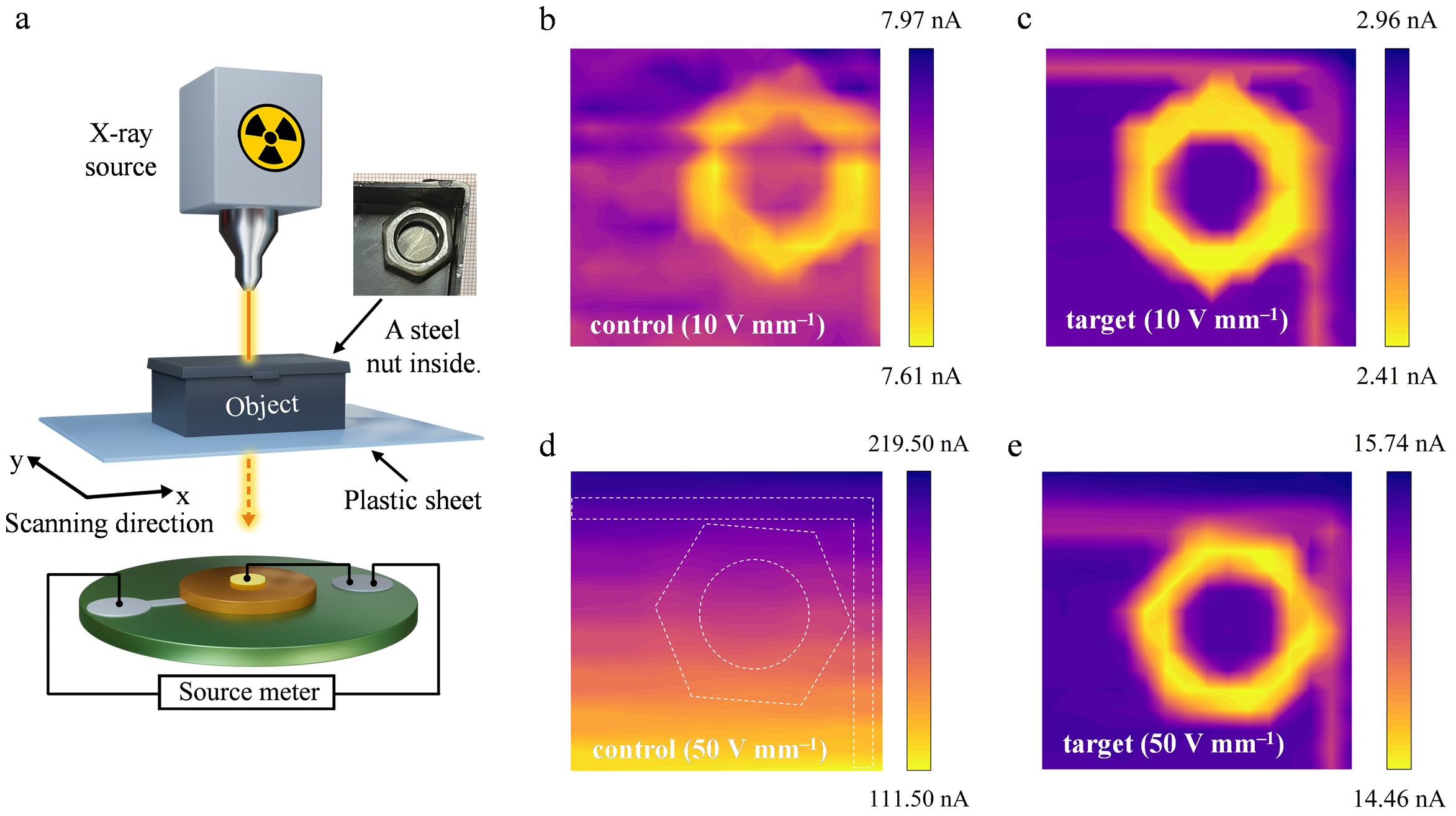
In a major step forward for radiation detection, a research team led by Prof. MENG Gang has significantly enhanced the performance of CsPbBr3-based X-ray detectors by dramatically lowering their detection limit and suppressing noise and ion migration through innovative cooling and defect-passivation strategies.
Their work, published in Applied Physics Letters and Advanced Functional Materials, lays the groundwork for the next generation of safer and more precise X-ray imaging technology.
One of the main challenges in utilizing CsPbBr3 for X-ray detectors has been minimizing noise and improving sensitivity.
To address this, the team applied a liquid nitrogen cooling technique to CsPbBr3 single crystals, effectively eliminating deep-level defects that typically introduce noise. This approach boosted the material’s resistivity by two orders of magnitude and reduced the detection limit to 0.054 nGyair·s⁻¹, enabling the detection of extremely weak X-ray signals.
The team also tackled the issue of ion migration in polycrystalline CsPbBr3 wafers, which are more practical for large-scale applications. In collaboration with Prof. Fang Xiaosheng's group from Fudan University, they developed a grain boundary passivation method that raised the ion migration activation energy to 0.56 eV. This significantly suppressed dark current drift under high electric fields, allowing the polycrystalline detector to reach a detection limit of 9.41 nGyair·s⁻¹ while maintaining excellent image contrast.
CsPbBr3 detectors could dramatically reduce the radiation dose required for X-ray imaging, which is particularly important for vulnerable populations, such as children and pregnant women. This advancement not only offers a clearer path toward next-generation X-ray detectors but also accelerates the evolution of radiation imaging technology toward greater safety and precision.

Comparison of X-ray Imaging Results for CsPbBr3 Wafer Based X-Ray Detectors Before and After Grain Boundary Modification (Image by CHEN Ran)